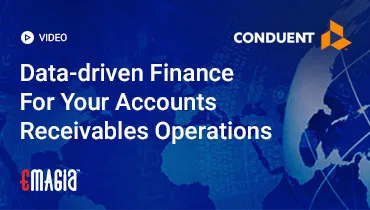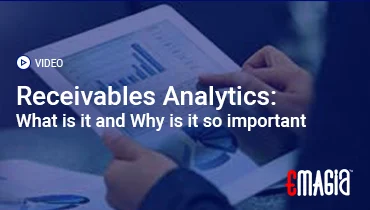In the dynamic world of business, daily operations demand immediate attention. But for true success and resilience, organizations must lift their gaze beyond the immediate horizon. It’s not enough to react to current trends; leading businesses anticipate and shape their future. This forward-looking approach is where the power of strategic planning comes into play, guiding decisions that transcend the current fiscal quarter.
While short-term predictions address immediate operational needs, a deeper, more profound analysis is required for sustainable growth. This is precisely the realm of Long Term Forecasting, a critical discipline that helps businesses envision and plan for opportunities and challenges far down the road. Without a clear view of the potential future, investments become speculative, market positioning is left to chance, and competitive advantage dwindles.
So, what exactly defines effective Long Term Forecasting? What methodologies enable businesses to make educated guesses about a future filled with uncertainty? This comprehensive guide will delve into the essence of long-range planning, exploring its unique methodologies, profound benefits, and the crucial role it plays in capital expenditure, strategic market positioning, and robust financial health. Get ready to discover how looking ahead can secure your competitive edge and drive predictable growth.
Understanding Forecasting Horizons: Short-term, Mid-term, and Long-term
Forecasting is the art and science of predicting future outcomes based on historical data and current trends. However, not all predictions are created equal, particularly when it comes to their time horizons.
Short-Term Forecasting: Addressing Immediate Needs
Short-term forecasts are designed to meet immediate, operational needs, typically covering a period of up to three to six months. They are highly detailed and focus on day-to-day decisions. What do short term forecasts predict? They predict variables like:
- Daily or weekly sales volumes.
- Production schedules.
- Staffing requirements.
- Immediate raw material needs.
- Projected short term cash balances.
One use of short range forecasts is to determine immediate liquidity requirements and optimize working capital. These forecasts are crucial for managing daily operations efficiently and addressing short-term needs effectively. Short-term forecasts generally cover up to a period of a few weeks or months, providing granular insights into immediate demands.
Medium-Term Forecasting: Bridging Operations and Strategy
Medium-term forecasts typically span a period of six months to two years. They bridge the gap between tactical operations and long-range strategy. Their focus is on:
- Annual budgeting.
- Resource allocation.
- Sales planning and marketing campaigns.
- Workforce planning.
These forecasts provide a more aggregated view than short-term predictions but retain enough detail to guide tactical decisions and serve as stepping stones for larger strategic goals, showing the interconnectedness of short term medium term long term planning.
Long-Term Forecasting: Shaping the Future Vision
Long Term Forecasting (or long range forecasting) extends beyond two years, often spanning five, ten, or even twenty years. These forecasts are less concerned with precise numbers for immediate operations and more with strategic direction, significant investments, and market shifts. They are less about “what will happen” and more about “what could happen” and “what do we need to prepare for.”
This horizon focuses on grander objectives like:
- Capital expenditure planning (new factories, major equipment).
- Entry into new markets or discontinuation of old products.
- Strategic partnerships and acquisitions.
- Long-term capacity planning (future talent needs, infrastructure development).
- Anticipating technological disruptions and regulatory changes.
The distinction between long term short term forecasting is crucial, as their methodologies and purposes diverge significantly.
The Core of Long-Range Forecasting: Beyond Just Numbers
Long Range Forecasting isn’t merely about extending a trendline; it’s a sophisticated exercise in understanding complex interdependencies and anticipating macro shifts that will define the business landscape of tomorrow. It requires a broader perspective than simply projecting current performance.
Purpose of Strategic Long-Range Projections: Guiding Monumental Decisions
The strategic value of long term forecasts lies in their ability to inform major, irreversible decisions that carry significant financial and operational implications:
- Capital Expenditure Planning: Deciding whether to build a new factory, invest in a new production line, or upgrade technology requires a long-term view of demand and market conditions.
- Capacity Planning: Ensuring your organization has the right production capacity and skilled workforce years down the line to meet anticipated demand.
- Market Entry/Exit Strategies: Identifying emerging markets for expansion or recognizing declining sectors to divest from.
- Research and Development (R&D) Investments: Committing resources to innovation that may only yield returns years later.
- Talent Acquisition and Succession Planning: Anticipating future talent needs and developing pipelines for leadership roles.
These decisions shape the very future of the organization, underscoring why meticulous long range forecasting is paramount.
Key Elements that Influence Long-Term Projections: External Forces
Unlike short-term forecasts that often rely on internal historical data, long-term projections are heavily influenced by external factors that are often beyond a company’s direct control:
- Macroeconomic Trends: Global and national GDP growth rates, inflation, interest rates, currency fluctuations, and unemployment rates.
- Industry Trends: Technological advancements (e.g., AI, automation, green energy), shifts in consumer preferences, evolving regulatory environments, and supply chain dynamics.
- Competitive Landscape: Anticipating new entrants, changes in competitor strategies, and potential market disruptions.
- Demographic Shifts: Changes in population size, age distribution, income levels, and cultural trends that impact consumer behavior and labor availability.
- Geopolitical Factors: Trade policies, political stability, and international relations that can impact global supply chains and market access.
Successfully integrating these complex external variables is what differentiates robust long-term forecasts from mere extrapolations.
Methodologies for Effective Long-Term Forecasting: The Blend of Art and Science
Given the inherent uncertainty of the distant future, Long Term Forecasting employs a mix of qualitative and quantitative methodologies, often blending expert judgment with data-driven models.
Qualitative Forecasting Methods: Expert Insights and Judgment
These methods rely on expert opinions, intuition, and non-numerical information, particularly useful when historical data is limited or when dealing with highly unpredictable future events.
- Delphi Method: A structured communication technique, originally developed as a systematic, interactive forecasting method which relies on a panel of experts. Experts answer questionnaires in two or more rounds. After each round, a facilitator provides an anonymous summary of the experts’ forecasts and their reasons for them. This allows experts to revise their earlier answers in light of the replies of other members of their panel.
- Market Research: Surveys, focus groups, and consumer panels to gather insights into future demand, product preferences, and market acceptance.
- Expert Opinion: Gathering insights from internal (executives, senior managers) and external (industry analysts, consultants) experts.
- Scenario Planning: Developing multiple plausible future scenarios (e.g., optimistic, pessimistic, most likely) and outlining strategies for each. This acknowledges uncertainty rather than attempting to predict a single future.
Quantitative Forecasting Methods: Data-Driven Approaches
These methods rely on mathematical models and historical data to predict future values. They are most effective when stable patterns exist in the data.
- Trend Analysis (Extrapolation): Projecting past trends (e.g., sales growth, cost increases) into the future. While simple, it assumes past patterns will continue, which is often not true for long-term forecasts.
- Regression Analysis: Identifying relationships between a dependent variable (e.g., sales) and one or more independent variables (e.g., marketing spend, GDP growth).
- Time Series Analysis (e.g., ARIMA models): Analyzing past data points collected over time to identify patterns like seasonality, trends, and cycles, and then extrapolating these patterns into the future. These are typically more complex than simple trend analysis.
- Econometric Models: Sophisticated models that combine economic theories with statistical methods to forecast economic variables and their impact on business performance.
- Predictive Analytics & AI: Leveraging advanced algorithms and machine learning to analyze vast datasets, identify complex correlations, and predict future outcomes with greater accuracy, even functioning as a sophisticated stock forecaster for market movements.
Integrating Qualitative and Quantitative Approaches: The Best of Both Worlds
For truly robust long range forecasting, combining qualitative insights with quantitative models is essential. Qualitative methods provide context, incorporate expert judgment for unforeseen variables, and help build scenarios, while quantitative methods offer data-backed projections and identify statistical relationships. This integrated approach mitigates the weaknesses of relying solely on one method.
The Role of Cash Flow in Long-Term Forecasting: Fueling the Future
While revenue and profit often grab headlines, what are cash flows are the true lifeblood of any business. The ability to generate and manage cash over the long haul is paramount for survival, investment, and growth. Therefore, cash flow in finance is a critical component of any strategic forecast.
Understanding Cash Flow: Operating, Investing, Financing Activities
Cash flow accounting categorizes a company’s cash movements into three main activities:
- Operating Activities: Cash generated from or used in the normal day-to-day business operations (e.g., cash from sales, cash paid to suppliers).
- Investing Activities: Cash used for or generated from the purchase or sale of long-term assets or investments (e.g., buying equipment, selling property).
- Financing Activities: Cash related to debt and equity transactions (e.g., issuing new stock, taking out loans, repaying debt, paying dividends). This often involves cash flow financing decisions.
A “conventional cash flow” statement will present these three sections, providing a comprehensive view of how cash moves through a business.
Why Long-Term Cash Flow Forecasting is Paramount: Strategic Liquidity
Long Term Cash Flow forecasting is perhaps the most critical financial projection a company can make. It’s about assessing the business’s ability to remain liquid and solvent far into the future. It directly informs:
- Funding Future Investments: Can the business internally fund planned capital expenditures, or will it need external financing?
- Debt Repayment Capacity: Will the company have sufficient cash to repay long-term loans as they mature?
- Dividend Policy: Can the company afford to maintain or increase dividend payouts to shareholders?
- Strategic Initiatives: What is the long-term cash impact of entering new markets or developing new products?
This deep dive into future cash movements is a cornerstone of cash forecasting in treasury management and overall financial strategy. Stable and predictable cash inflows from core operations are often referred to as “level sets of frequent consistent cash flows,” providing a solid base for longer-term planning.
Building a Robust Long-Term Cash Forecast: Interconnected Projections
A comprehensive long term cash flow forecast integrates various long-range business plans:
- Revenue and Expense Projections: Based on market growth, pricing strategies, and cost structures over the long term.
- Capital Expenditure Projections: Incorporating plans for new factories, equipment upgrades, and technology investments.
- Debt Servicing Schedules: Future interest and principal payments on existing and projected debt.
- Working Capital Changes: Anticipating long-term changes in inventory, receivables, and payables.
- Strategic Initiatives’ Cash Impact: Estimating the cash inflows and outflows from major projects or market shifts.
This intricate web of projections forms the basis for accurate cash forecast definition over extended periods.
Challenges and Best Practices in Long-Term Forecasting
Despite its strategic importance, Long Term Forecasting is inherently challenging due to the compounding effect of uncertainty over extended periods. However, embracing best practices can significantly enhance its accuracy and utility.
Key Challenges in Achieving Accurate Long-Range Projections
- High Uncertainty: The further out the forecast horizon, the more unpredictable variables become (e.g., technological advancements, geopolitical events, consumer taste changes).
- Data Availability and Quality: Reliable historical data might not exist for entirely new ventures, or external data needed for macroeconomic trends can be limited or subject to revision.
- Human Bias: Forecasters can be overly optimistic or pessimistic, influenced by recent performance or personal beliefs.
- Lack of Flexibility: Rigid adherence to an old forecast, even when new information emerges, renders it useless.
- Integrating Disparate Data Sources: Pulling together internal financial data with external market trends can be complex without integrated systems.
Best Practices for Robust and Actionable Long-Term Forecasts
- Be Agile and Adaptive: Recognize that forecasts are living documents. Regularly review and revise them (at least annually, often quarterly) as new information becomes available and circumstances change.
- Use Multiple Scenarios: Instead of a single point estimate, develop best-case, worst-case, and most-likely scenarios. This helps in understanding the range of possible outcomes and preparing contingency plans.
- Leverage Technology: Utilize advanced forecasting software, data analytics, and AI/ML tools to process vast amounts of data, identify hidden patterns, and automate aspects of the projection process. This enhances the effectiveness of your stock forecaster capabilities.
- Cross-Functional Collaboration: Involve key stakeholders from across the organization—sales, marketing, operations, R&D, and finance—to gather diverse insights and ensure buy-in for the forecasts.
- Focus on Key Drivers: Identify and deeply understand the few critical variables that have the most significant impact on your long-term performance, rather than trying to perfectly predict every single line item.
- Embrace “Cash Flow Forecasting Best Practices”: For the financial aspect, meticulously track all cash inflows and outflows, differentiate between operating investing financing activities, and understand the impact of working capital on liquidity.
By adhering to these principles, businesses can transform long term forecasting from a daunting exercise into a powerful strategic tool.
Emagia: Empowering Your Strategic Long-Term Forecasts with AI
In the complex and rapidly evolving world of modern business, strategic Long Term Forecasting is no longer just a financial exercise; it’s a critical imperative for sustainable growth. Emagia’s AI-powered Order-to-Cash (O2C) platform is meticulously designed to provide the robust data foundation and intelligent insights needed to build accurate and actionable long-range projections, particularly for your most vital asset: cash flow.
Emagia centralizes and unifies all your critical Accounts Receivable data – from sales orders and invoices to cash application and collection interactions. This comprehensive data forms the bedrock for highly accurate revenue and cash flow projections. Our cutting-edge Artificial Intelligence and Machine Learning algorithms intelligently analyze historical payment patterns, customer behavior, and even external market indicators to provide predictive insights into future cash inflows. This means you gain a significantly clearer picture of your anticipated cash position years down the line, essential for long range forecasting for capital expenditure planning and debt management.
By automating processes like intelligent cash application, proactive collections, and dispute resolution, Emagia ensures that the underlying cash flow data feeding your Long Term Forecasting models is consistently pristine and up-to-date. This eliminates manual errors and reconciliation headaches that often plague traditional forecasting. Our intuitive dashboards offer real-time visibility into your receivables and liquidity health, allowing your finance team to track key drivers and quickly adapt projections as market conditions shift. By partnering with Emagia, you’re not just generating forecasts; you’re gaining an intelligent financial partner that transforms your future planning into a strategic advantage, enabling smarter long-term investments, optimizing working capital, and driving predictable, sustainable growth.
Frequently Asked Questions (FAQs) About Long Term Forecasting
What is the main difference between short-term and long-term forecasts?
The main difference lies in their time horizons and purpose. Short-term forecasts (weeks to months) predict immediate operational needs like daily cash or inventory, while Long Term Forecasting (2-5+ years) focuses on strategic planning, major investments, and market positioning, aiming to guide the company’s future direction.
Why is long-term cash flow forecasting important for businesses?
Long Term Cash Flow forecasting is crucial because it assesses a business’s long-term liquidity and solvency. It informs critical decisions about funding future investments (capital expenditures), ability to repay long-term debt, dividend policy, and overall financial sustainability, ensuring the company can meet its financial obligations far into the future.
What factors significantly influence the accuracy of long-range forecasts?
The accuracy of long range forecasts is significantly influenced by external factors like macroeconomic trends (GDP, inflation), industry trends (technological shifts, regulatory changes), competitive landscape, demographic shifts, and geopolitical factors. Internal factors like data quality and human bias also play a role.
How far ahead do long-term forecasts typically look?
Long term forecasts typically look 2-5 years into the future, but for major strategic planning, they can extend to 10 or even 20 years. The further out the horizon, the greater the uncertainty and the more reliance on qualitative methods and scenario planning.
Can Artificial Intelligence (AI) help with long-term financial forecasting?
Yes, Artificial Intelligence (AI) and Machine Learning (ML) can significantly enhance Long Term Forecasting. They can process vast amounts of complex data, identify intricate patterns, build more accurate predictive models, and provide real-time insights, reducing human bias and improving the reliability of long-range financial projections.
What is the relationship between short-term needs and long-term strategy?
Short-term needs and long-term strategy are interconnected. While short-term forecasts address immediate operational demands, they must align with the broader long-term strategic vision. Achieving short term cash goals helps fund long-term investments, and long-term plans guide the prioritization of short-term needs and resource allocation.
What are ‘operating, investing, and financing’ cash flows in forecasting?
‘Operating, investing, and financing’ are the three main categories of cash flows presented in a cash flow statement and projected in a forecast. Operating activities relate to core business, investing activities to long-term assets and investments, and financing activities to debt, equity, and dividends. Differentiating these helps provide a comprehensive view of cash generation and usage.
Conclusion: Building Financial Agility Through Foresight
As we’ve thoroughly explored, Long Term Forecasting is far more than an academic exercise; it is an indispensable strategic tool for any business aiming for sustainable growth and resilience. In a world characterized by rapid change, the ability to anticipate future trends and plan for major investments years in advance is a significant competitive advantage.
By combining robust quantitative methodologies with insightful qualitative analysis, businesses can develop nuanced long term forecasts that guide critical decisions on capital, capacity, and market strategy. While inherent uncertainties remain, embracing best practices, leveraging technology, and fostering cross-functional collaboration transforms forecasting from a daunting task into a dynamic process that empowers proactive management.
Ultimately, a deep commitment to Long Term Forecasting provides the clarity and direction needed to navigate an uncertain future, ensuring your business is not just surviving, but actively shaping its destiny for enduring success.



